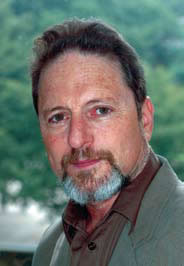College of Education and Human Development
Helping the Young Victims of Human Trafficking
May 3, 2010
As a counselor, Rita Chi-Ying Chung knows she has about 30 seconds to gain a person's trust so that they will open up to her. Chung, along with fellow Mason professor Fred Bemak, has been able to put her skills to use when meeting with Burmese child trafficking victims.

Rita Chi-Ying Chung
"Typically, when we first meet children who have been trafficked, male or female, they put on a front. They behave as if everything is ok, and they are fine," says Chung, a professor of education in Mason's College of Education and Human Development, "however, once you show these children that you really do care about their wellbeing, it doesn't take long for them to open up and talk about the horrific abuse they have suffered. They tell us things they haven't been able to share with others. It's very cathartic for them."
In an interview with Counseling Today about her first trip to Burma in March 2007, Chung recounted a story in which one of the girls she met with spoke about working in a five-story factory in Thailand. The girls who worked there had to sleep in deplorable conditions on the top floor of the factory. A barbed wire fence surrounded the facility, and the girls were not allowed to leave. Many were too frightened to attempt an escape. Their captors told the girls that if they did escape, they would be arrested and thrown in prison because they were in Thailand illegally.
Variations of this scenario play out repeatedly around the world every day. The United Nations, Save the Children, and other child advocacy groups hold that the global human trafficking problem is too widespread to be effectively stopped. Estimates of the number of people affected by trafficking range from 600,000 to 2.5 million worldwide, but it is impossible to know the exact number. Bemak and Chung, with backgrounds in cross-cultural and multicultural psychology and counseling, have begun investigating the reasons that lead a person to become a victim of human trafficking and how to reintegrate those who have been trafficked back into their families and communities.

Fred Bemak
"It is estimated that human trafficking generates $9.5 billion per year globally and has become the fastest-growing source of profit for organized criminal enterprises worldwide," says Chung. "While there are different reasons for being trafficked, the majority of human trafficking is for sexual exploitation."
Save the Children U.K. invited Bemak and Chung to take part in a mental health exploratory mission in Burma based on a presentation they made at the 2006 Asia-Pacific Childhoods Conference in Singapore. Save the Children was trying to gain a better understanding of the factors in the Southeast Asian country that lead to child trafficking. Bemak and Chung were asked to look into why so many Burmese children chose to leave home and migrate internally and across the border to Thailand and China, what the family issues were prior to migration, what the migration process entailed, and how those who returned to Burma could be helped to integrate back into their communities in a healthier way.
Over the past year and a half, Bemak and Chung spent time in remote villages and big cities in Burma talking to village elders, families, and children about the circumstances surrounding the migration and trafficking of these children. They found that many villagers believed that the trafficked children would be able to support their entire family with the money they could earn.
"Because of the extreme poverty, many families in Burma encourage their children to accept the jobs so they can send money back home," says Bemak, who is also director of Mason's Diversity Research and Action Center. "Children are lured to Thailand by the possibility of making up to 10 times the Burmese salary. Many children say, 'My family is hungry, and I can go work in Thailand and help feed them.' So they choose to migrate and often wind up tolerating abuse and exploitation to help their family."
Bemak explains that children migrate with the assumption that they will be working in a factory or as a housekeeper but instead are often forced into sweatshops or prostitution. The children are also often subject to physical, emotional, and sexual abuse.
"It's not uncommon for these children to be locked up at night, beaten, and drugged to keep them working 15 to 16 hours a day," says Chung. "The children we spoke with often told us stories about the abuse they endured. They would say that the physical abuse was OK—you just got hit or slapped—but that the sexual abuse was what really affected them."
In Asian culture, being a prostitute or victim of sexual abuse brings shame to families and therefore creates an extremely difficult situation for girls who return to their communities. Many of these girls are disowned and ostracized by their family and community. Chung explains traffickers know about and capitalize on this dilemma. They are well aware that even if girls escape from prostitution, there is nowhere they can go to seek help, so there is a strong chance that many of them will remain as commercial sex workers.
Surprisingly, the researchers found that once these children return home, many glamorize their experiences to avoid being ostracized, which perpetuates a positive mythology about trafficking. Because migration has been accepted for generations, children will be welcomed back as long as they don't recount horror stories, which engenders a "don't ask, don't tell" mentality. Children who were exploited—who suffered physical and sexual abuse—are left to deal with the trauma on their own. Unfortunately, some children are too traumatized by their experiences and unable to successfully readapt and reintegrate into the community.
"We talked with some of the returnees, and they are extremely traumatized," said Bemak in the Counseling Today interview. "They sit in their room and won't come out or socialize. The returnees just aren't functional. They exhibit signs of [posttraumatic stress disorder] and are highly depressed, but nobody knows how to handle them or talk to them."
Using the information they gathered from their visits, Bemak and Chung compiled a list of recommendations for the Save the Children staff in Burma. One recommendation was to have trafficked children write realistically about their experiences. Save the Children staff members would then read these stories that depict the reality of trafficking to other children to try to dissuade them from wanting to migrate in the first place. Another recommendation is to train staff on counseling techniques to help victims open up about their experiences.
To date, Bemak and Chung have worked with the migration that is internal to Burma and the migration to Thailand. They plan to return to Burma to examine migration to China.
—Jennifer Edgerly
